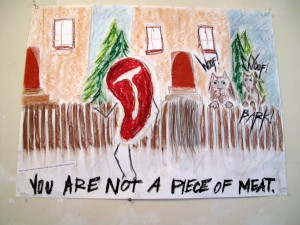From our friend HarassMap in Egypt:
“Our campaign ‘Harasser = Criminal’ (El Mota7aresh Mogrim) is live!
It is a campaign to motivate people to take action and stand up to sexual harassment when they see it happen, so that we can start building a society where sexual harassment is not tolerated and harassers do not get away with their crime.
We launched with a press conference on Thursday May 21 at the Goethe Institute in downtown Cairo. The launch was covered by MBCMasr, Mada Masr, Youm 7, and others. Check out our video from the press conference here.
The campaign is now running online on Facebook, Twitter, and Instagram. Over the next week it will roll out on the streets in Cairo and other governorates around Egypt.
TV and radio ads will be aired on MBC Masr, CBC, El Nahar, Dream 2, and Radio Masr. Find the directors cut versions of the campaign ads here:
You can find more written information about the campaign on our website.”



 Hitchhiking: it’s as old as the road itself, but not everyone feels comfortable with the idea of hopping into a stranger’s vehicle for a ride. This may especially be true for women who are warned about the possibility of harassment or assault while hitchhiking. Yet hitchhiking still has its popularity and plenty of women are hitting the road with their thumb or a sign. So who are these women and why are they getting into a car with complete strangers?
Hitchhiking: it’s as old as the road itself, but not everyone feels comfortable with the idea of hopping into a stranger’s vehicle for a ride. This may especially be true for women who are warned about the possibility of harassment or assault while hitchhiking. Yet hitchhiking still has its popularity and plenty of women are hitting the road with their thumb or a sign. So who are these women and why are they getting into a car with complete strangers?
